I’ve been photographing wildlife for about the past 10 years. I’ve focused mostly on the wildlife that is close at hand and most common to West Texas where I live. The wildlife in the area is plentiful and diverse if you take the time to look for it. I have been fortunate enough to be able to photograph a large variety of birds and mammals over time, but have found Great Horned Owls to be quite difficult to find. I have studied the information regarding their habitat and behaviors and although plentiful in most areas, they have remained elusive to me. Today, while out scouting my local park, I had the opportunity to photograph my first two Great Horned Owls.
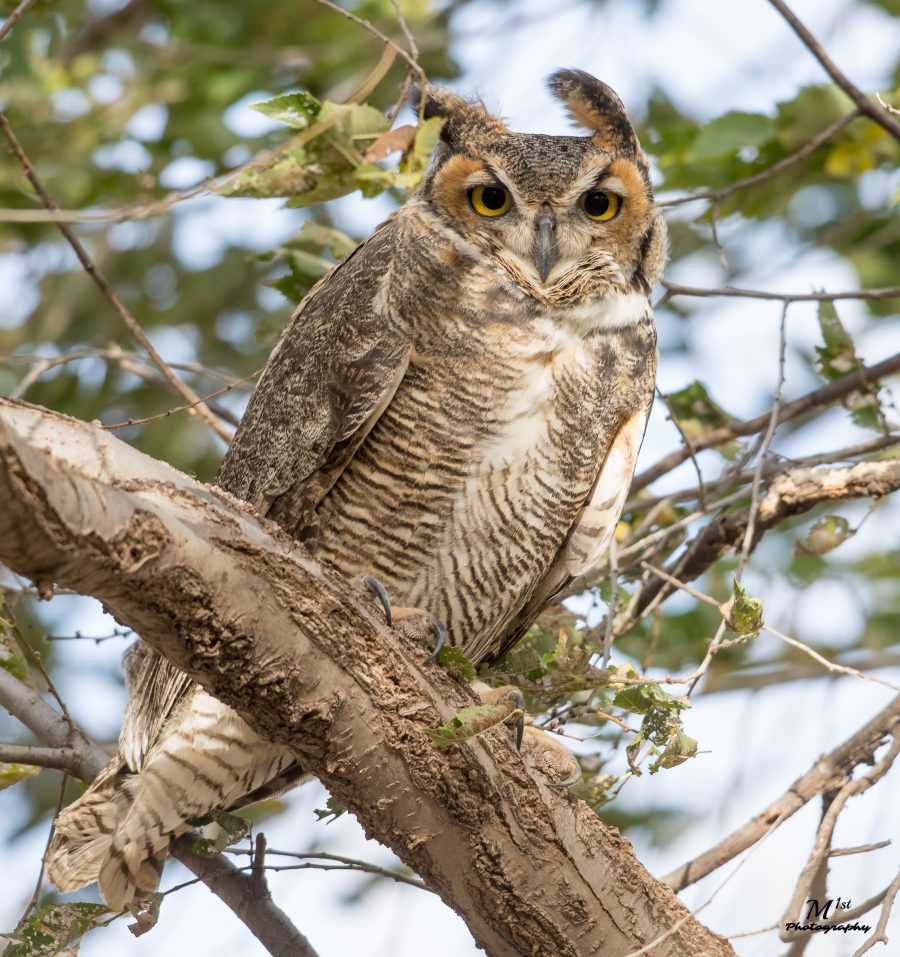
With its long, earlike tufts, intimidating yellow-eyed stare, and deep hooting voice, the Great Horned Owl is the quintessential owl of storybooks. This powerful predator can take down birds and mammals even larger than itself, but it also dines on daintier fare such as tiny scorpions, mice, and frogs. It’s one of the most common owls in North America, equally at home in deserts, wetlands, forests, grasslands, backyards, cities, and almost any other semi-open habitat between the Arctic and the tropics.
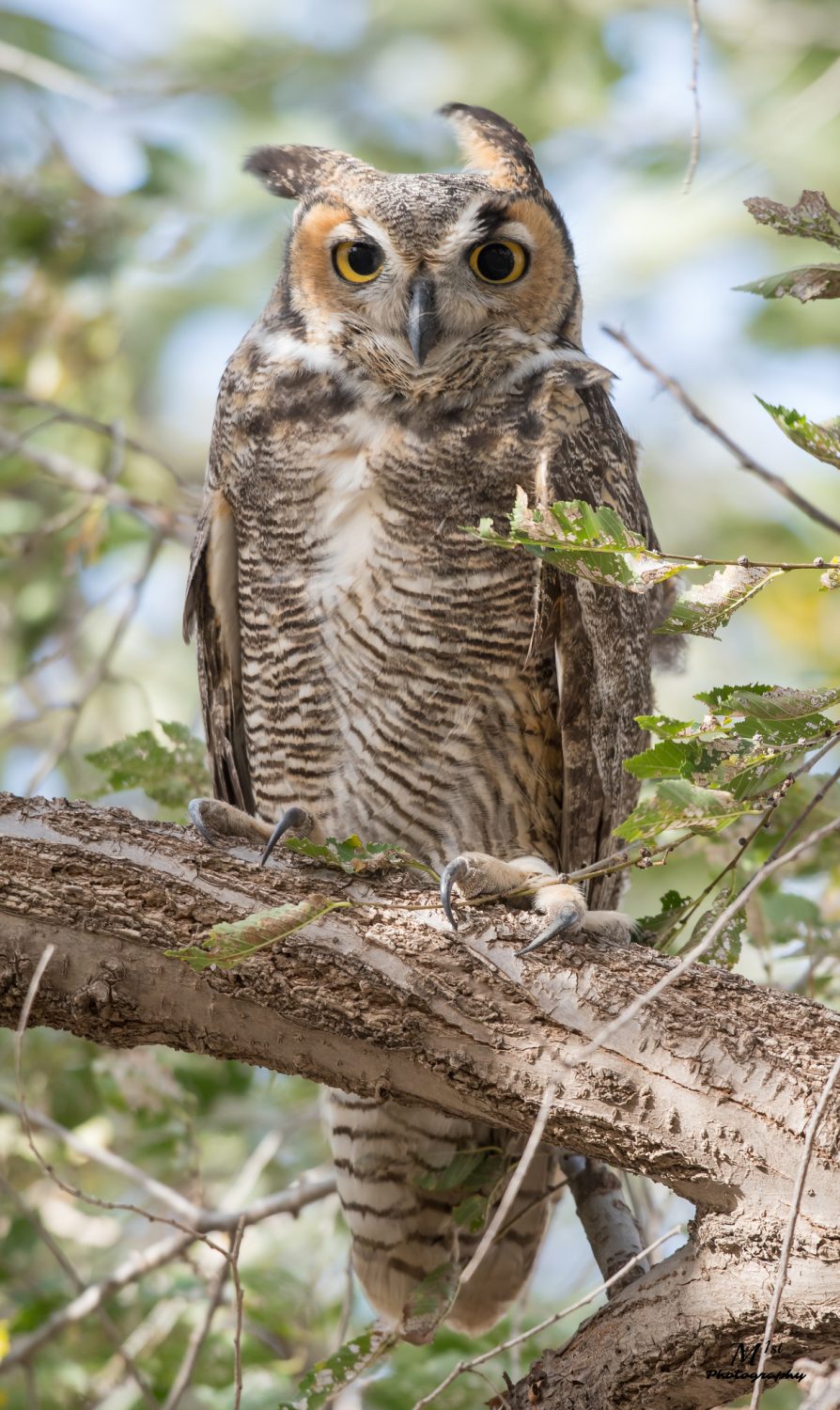
-
Size & Shape
These are large, thick-bodied owls with two prominent feathered tufts on the head. The wings are broad and rounded. In flight, the rounded head and short bill combine to create a blunt-headed silhouette.
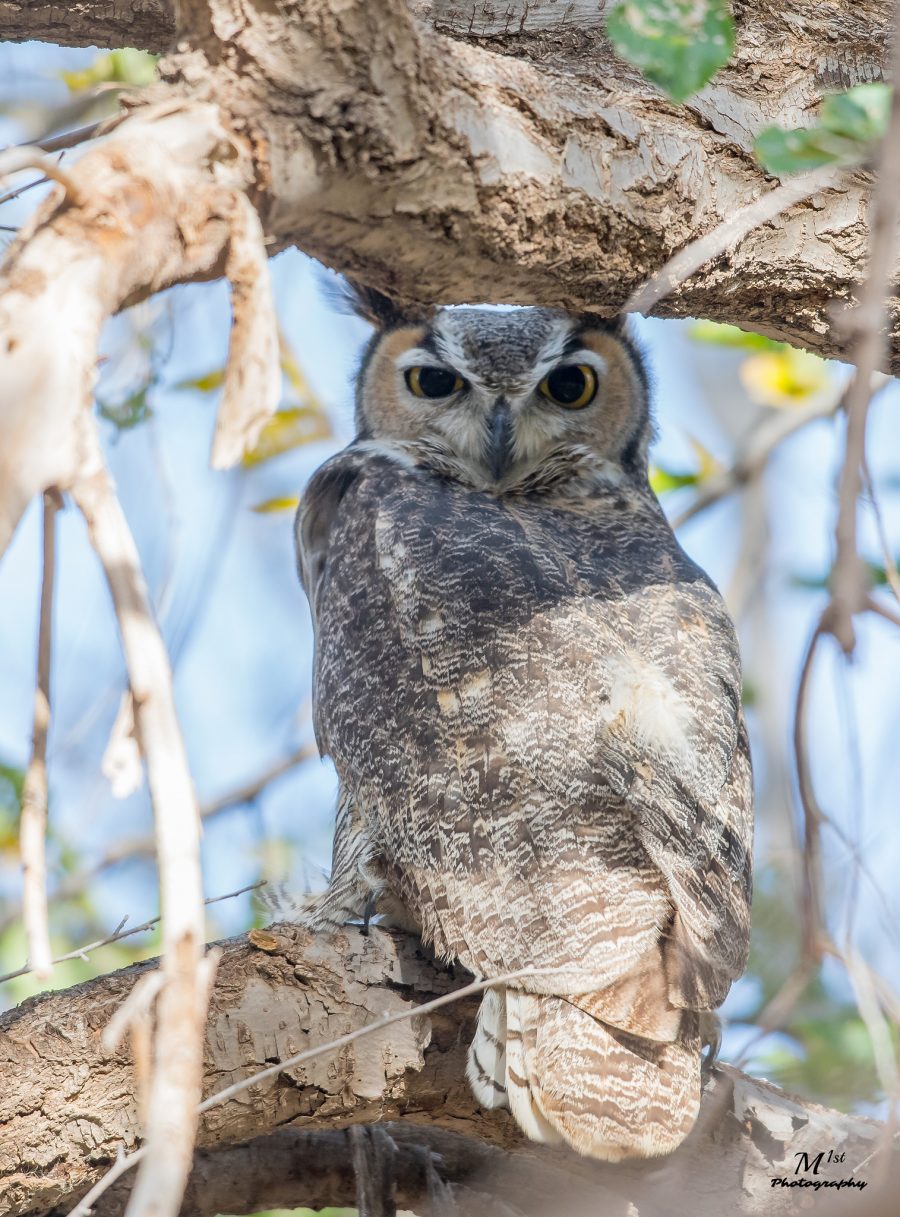
-
Color Pattern
Great Horned Owls are mottled gray-brown, with reddish brown faces and a neat white patch on the throat. Their overall color tone varies regionally from sooty to pale.
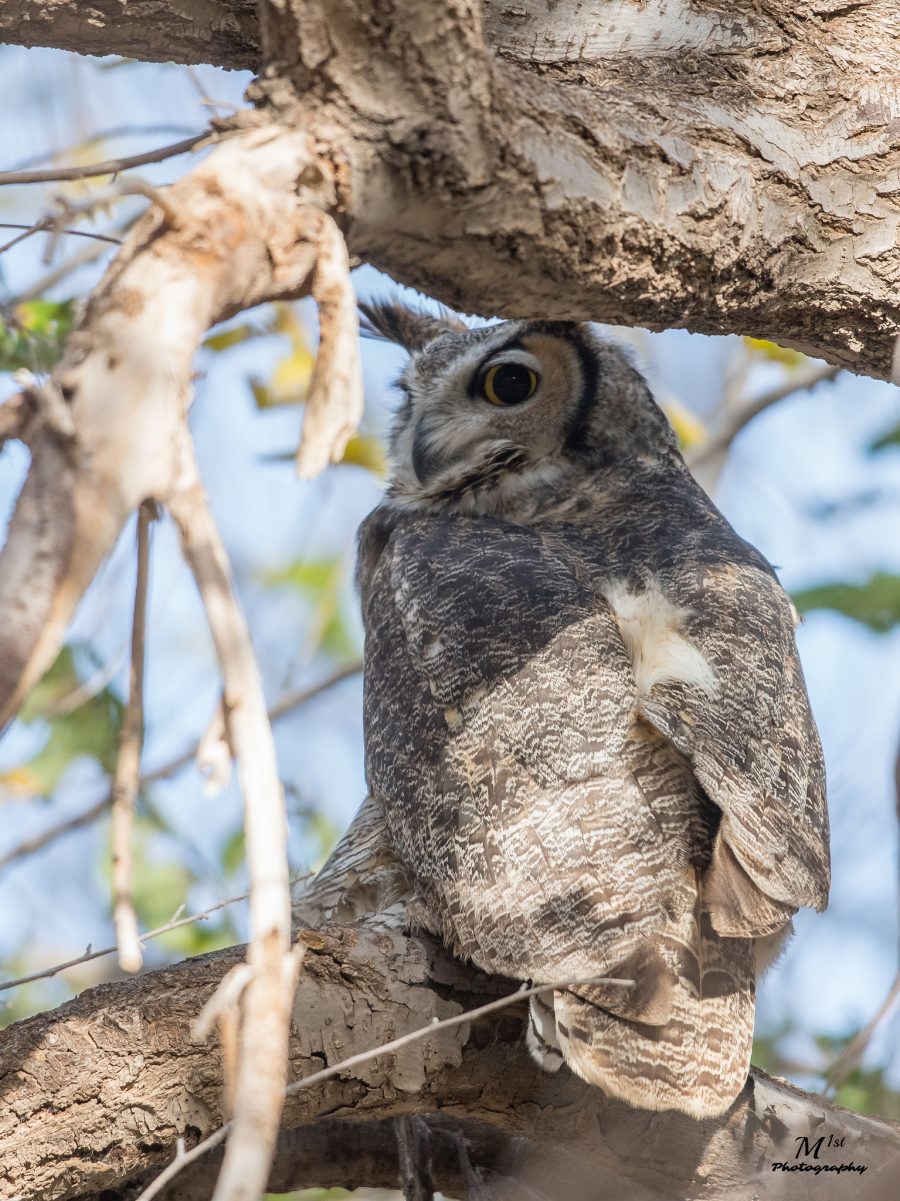
-
Behavior
Great Horned Owls are nocturnal. You may see them at dusk sitting on fence posts or tree limbs at the edges of open areas, or flying across roads or fields with stiff, deep beats of their rounded wings. Their call is a deep, stuttering series of four to five hoots.
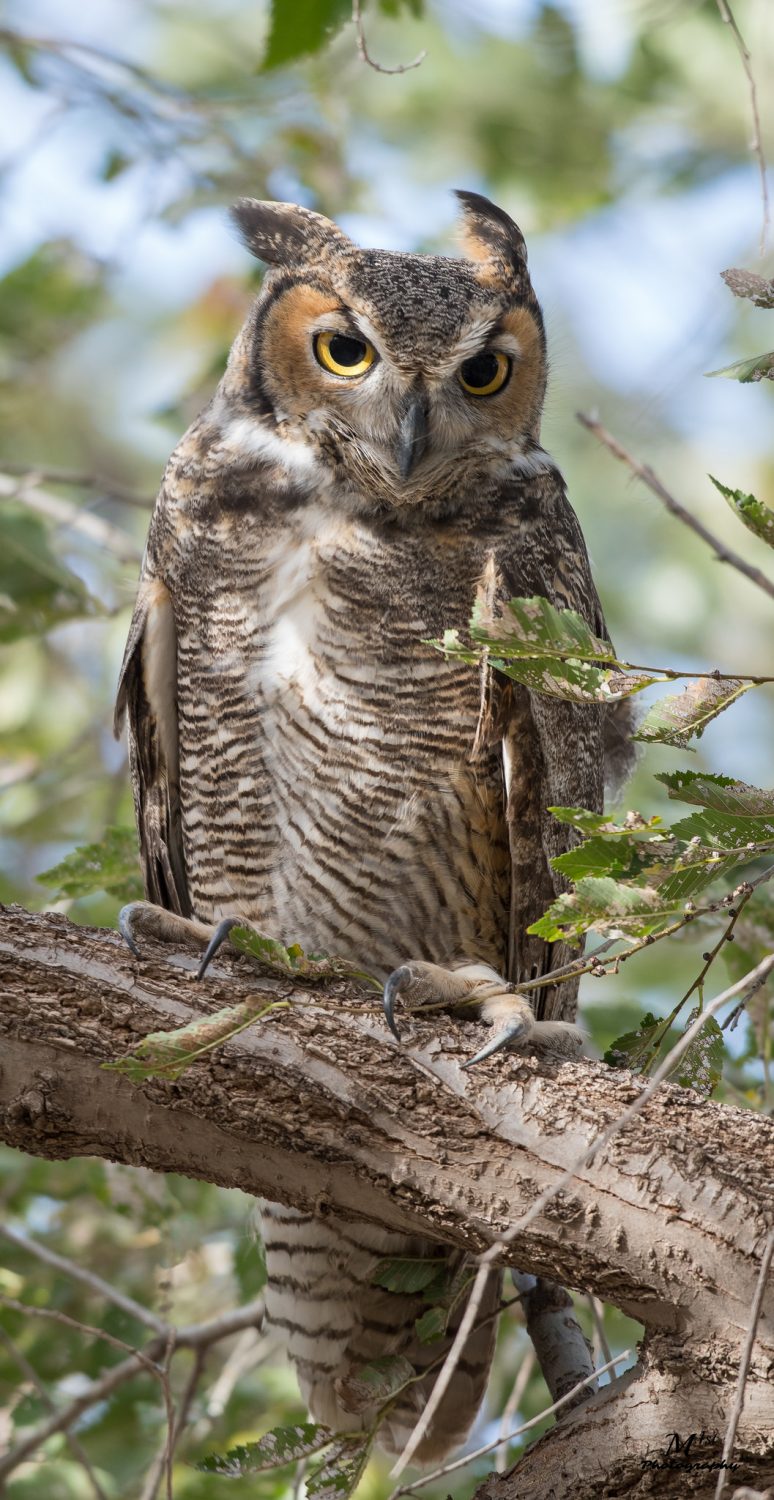
-
Habitat
Look for this widespread owl in woods, particularly young woods interspersed with fields or other open areas. The broad range of habitats they use includes deciduous and evergreen forests, swamps, desert, tundra edges, and tropical rainforest, as well as cities, orchards, suburbs, and parks.
Get outside and look around. Great Horned Owls are plentiful and in every region of the US. They aren’t easy to see. Being aware and educating yourself to where to look will increase your chances of photographing this beautiful and elusive bird.
